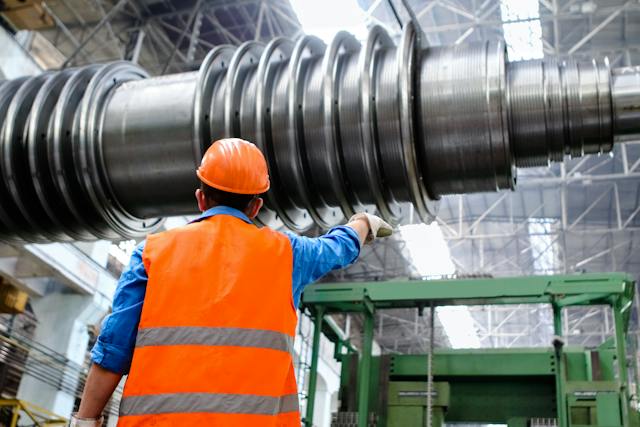A bulk bag filler is an investment and is often a vital addition to a process that involves bulk ingredients. As with any capital expenditure, it is important to know what kinds of bulk bag filler problems you may encounter and how you can avoid them. If used properly, those drawbacks are non-existent.
Spiroflow has been around for more than four decades. We specialize in powder handling and dry solids processing. Safely and efficiently filling bulk bags is one of our best skill sets, and we know how important that is to our customers.
What type of Bulk Bag Filler?
There are several bulk bag filler models out there. Because every process is different, there are many variables you’ll need to consider when choosing a bulk bag filler:
- Available headroom,
- Filling by weight or volume,
- How filled bags will be removed,
- What material are they being filled with.
Bulk Bag Filler Problems
Bulk bag filler problems can be sorted into several different categories. Here’s how to fix and/or prevent them. This article gives a general overview. Please be sure to consult your manufacturer and user manual for detailed instructions specific to your bulk bag filler.
Staying Safe While Filling Bulk Bags
First of all, only trained personnel should operate, clean, or maintain the bulk bag filler or any other equipment, such as the flexible screw conveyor or the conveyor belt system. A bulk bag filler can be dangerous if not used correctly. Consult with your conveyor systems manufacturers on what materials and containers should and shouldn’t be used with your filler.
Working on a filler without guards, fixed flexible connectors, or any other safety devices should only happen when the machine is turned off. The unit feeding the filler must be safeguarded against unintentional start-up. Compressed air is a potential hazard that should be mentioned. A lockout valve is supplied with air equipment to isolate the machine when it’s being serviced. Check with your manufacturer and/or manual about the maximum allowable operating pressures.
The condition of the bulk bag should be monitored, too. If the bag’s body or lifting loops are damaged, the bag shouldn’t be used. Do not stand near the filled bag while it’s being lifted.

Troubleshooting a Bulk Bag Filler
Are you getting an incorrect weight reading (verified by the weight of a known amount)? When troubleshooting incorrect weight readings from a weighing platform, it’s crucial to identify the possible causes and their corresponding solutions. Here’s a table summarizing these potential issues and how to resolve them.
| Possible Cause | Solution |
| The weigh platform is resting on debris or other foreign objects. | Clear debris or objects from around the weigh platform. |
| The rigid connection is tied to the weighing platform. | Use only flexible connections to the weigh platform. |
| Set points on the weigh platform are improperly set. | Set points should be re-entered using the weigh control manual as a guide. |
| The load cells may be damaged. | Check the signals from the load cells (qualified electrician required). Replace the damaged load cell(s) and send the original load cell out to be tested. |
| The weigh display panel may need troubleshooting. | Refer to the weigh display manual for troubleshooting information. |
Does the neck seal fail to inflate properly? When addressing issues with a neck seal not inflating properly, it’s important to identify the root causes and apply the correct solutions. Here’s a table that encapsulates these potential problems and their respective solutions.
| Possible Cause | Solution |
| The air supply is shut off or disconnected. | Turn ON the air or reconnect the air supply. Readjust the air regulator if required. |
| The inflatable sleeve is leaking so much that it is unable to seal on bag neck. | Repair or replace the sleeve. |
| The Inflate / Deflate switch is faulty. | Repair or replace the switch. |
| The neck seal is over-inflating. | Decrease the air pressure on the precision regulator. |
| There is possible blockage or leakage in the air lines. | Replace or repair the air lines. |
| The inflate switch is faulty. | Repair or replace the inflate switch. |
When encountering issues with the inflation of a bulk bag liner, especially in cases where bag inflation is optional, it’s essential to identify and address the specific causes. Here’s a table that outlines the potential problems and their solutions.
| Possible Cause | Solution |
| The air supply is shut off or disconnected. | Turn ON the air or reconnect the air supply. Readjust the air regulator if required. |
| There is a blockage or leakage in the air lines. | Replace or repair the air lines. |
| The inflate switch is faulty. | Repair or replace the inflate switch. |
Maintenance and Inspection
Regularly monitoring your equipment and conveyor technologies might be the best way to avoid mechanical failure. This is especially true for machinery used in filling operations, where precision and reliability are paramount. Here is what you should do:
- If you are filling by weight, the weigh platform should be inspected on a monthly basis to ensure it is level.
- If you are filling by weight, any spillage buildup should be cleaned as soon as possible. Erroneous weight readings may occur if the weight platform has foreign debris.
- If you are filling by weight, use a test load of known weight to verify a weight readout on a bimonthly basis. This may give an early indication of future load cell problems. This may also be an indication that the weigh platform is out of calibration.
- If you are using vibration in your filling operation the rubber vibration isolator mounting pads should be inspected after every 1,000 hours of use for signs of wear or deterioration.
- The inflatable sleeve on the neck seal should be inspected monthly for pinholes, cracking, or other signs of deterioration. The loss of air pressure in a neck seal with a damaged sleeve can result in dusting and improper filling of the bulk bag during the filling cycle.
- The air lines and air supply filtering devices should be inspected at least weekly for cracks, leakage, and moisture buildup. Drain and repair as needed.
- A complete bolt check monthly or more frequently when using vibration to compact product is recommended.
Adhering to these maintenance and inspection routines can significantly reduce the risk of equipment malfunction, thereby maintaining the efficiency and reliability of your filling operations.

Do You Have Any Questions?
We hope you found this article helpful. If you have any questions, please feel free to contact us. Our team at Spiroflow will be happy to assist you. Are you interested in more than just bulk bag fillers? We carry a full line of bulk bag dischargers and mechanical conveyor solutions. We also perform control systems integration. Let us know if we can help!






